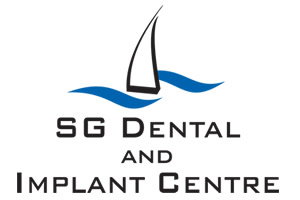Getting Rid Of Plaque
Burton dental hygienist, Antonia Kemp, discusses effective treatments.
Many of you will have seen various advertisements for toothpastes that claim to get rid of plaque, as well as generally cleaning your teeth. This is slightly misleading though as plaque, or rather the bacteria that form plaque, are an ever present in our mouth and can’t really be eliminated entirely. What we can do, on a daily basis, is to keep these bacteria under control, and that is the aim when we brush and floss our teeth.
What is plaque?
Plaque is a light film of bacteria that collects on the surface of the teeth, and the gum-line. It is made up of millions of bacteria of different types. It is colourless but can feel a little ‘slimy’, especially if you have not cleaned your teeth or perhaps have gone to sleep dehydrated and woken up with a gooey white substance in your mouth which is simply a larger collection of plaque.
Plaque has a habit of finding its way into small crevices of your teeth and is one of the main contributors to tooth decay. Without regular brushing, the bacteria and acids present in plaque will eat away at the tooth enamel until the more vulnerable inner part of the tooth becomes exposed. At this stage, decay is likely to advance more quickly, with toothache likely to follow soon after.
By and large, plaque control is relatively straightforward, and a good regime of regular brushing will help to keep it under control. You should also consider adding flossing to your regime too, if you don’t already do so. This is a great way of removing plaque that has become trapped between the teeth and on the gum line.
Why do I need to see the hygienist?
Given what we have discussed above, you might wonder why Mike Allen’s Dental Practice also recommend that you see a hygienist every six months or so. The reality is that even the best brushing and flossing regime is likely to miss some of the plaque. When not removed, this eventually results in tartar forming. Whilst some people often associate plaque and tartar as the same thing, they are quite different, especially when it comes to their removal.
Whilst the majority of plaque can be removed by the the patient through brushing and flossing, the same cannot be said about tartar. Tartar, also sometimes referred to as calculus, is basically plaque that has hardened and attached itself to the teeth or gum line. Not only is it harmful in itself, but the hardened bacteria also forms a rough surface that makes it easier for further bacteria to collect upon, potentially accelerating the speed at which gum disease symptoms may develop. On a more cosmetic basis, tartar also attracts staining, making your teeth appear somewhat discoloured and often feeling rough when you run your tongue on their surface.
When it comes to the removal of these hardened deposits of bacteria, there is only one solution available, and that is to have a scale and polish procedure which is carried out by myself or another hygienist at our Burton practice.
The procedure
A scale and polish is not a painful procedure and there is no need for a local anaesthetic. Initially a special tool is first used to remove the bulk of the tartar from the teeth and gum line. This is done by gently scraping it from the surfaces that it has become attached to (hence the somewhat less gentle term this treatment is sometimes called; a ‘scale and polish’). Tartar that has been removed from the surface is removed from the mouth using a suction tool which is applied at the same time. Please note that although tartar scraping tools are widely available to use at home, it is strongly advised that you don’t attempt this. Removal of tartar requires appropriate training and to attempt to do so yourself could result in damage to your teeth and soft tissues.
Having removed the bulk of the tartar, we then remove any remaining patches through the use of a sonic tool. This uses vibrations that shatter the remaining tartar and remove it from the teeth. Finally, a very high speed brush is used to remove any final pieces that remain, leaving your mouth feeling clean and healthy. You will probably also find that your teeth look a little whiter too as some surface staining will have been removed.
We have mentioned the risks posed by gum disease in previous blogs, and again, encourage patients to pay attention to their gum health as well as their teeth. Making an appointment to see a dental hygienist is one of the best ways that you can start to achieve this. If you would like to make an appointment at our Burton dental surgery, please call Mike Allen’s on 01283 845345.
Antonia Kemp – Dental Hygienist – GDC 237339
